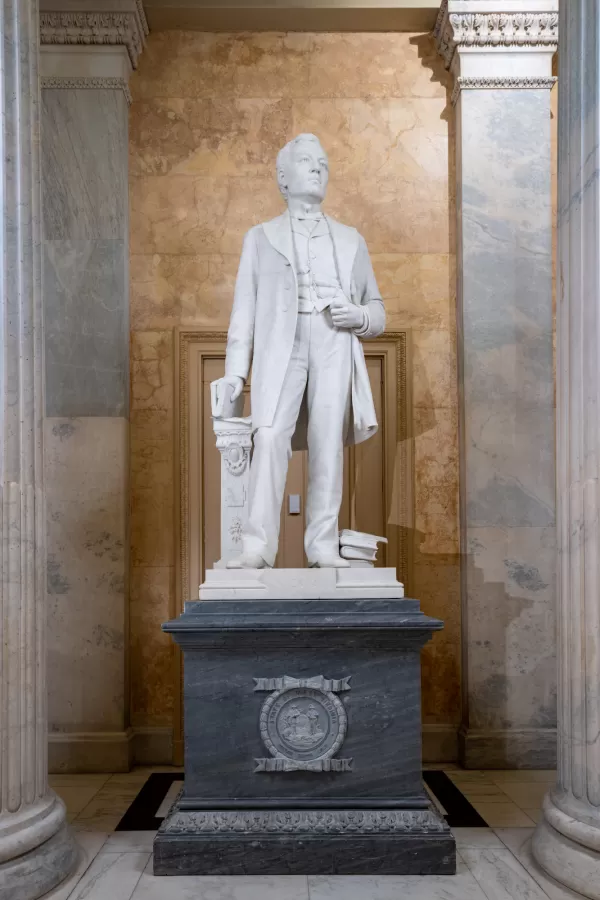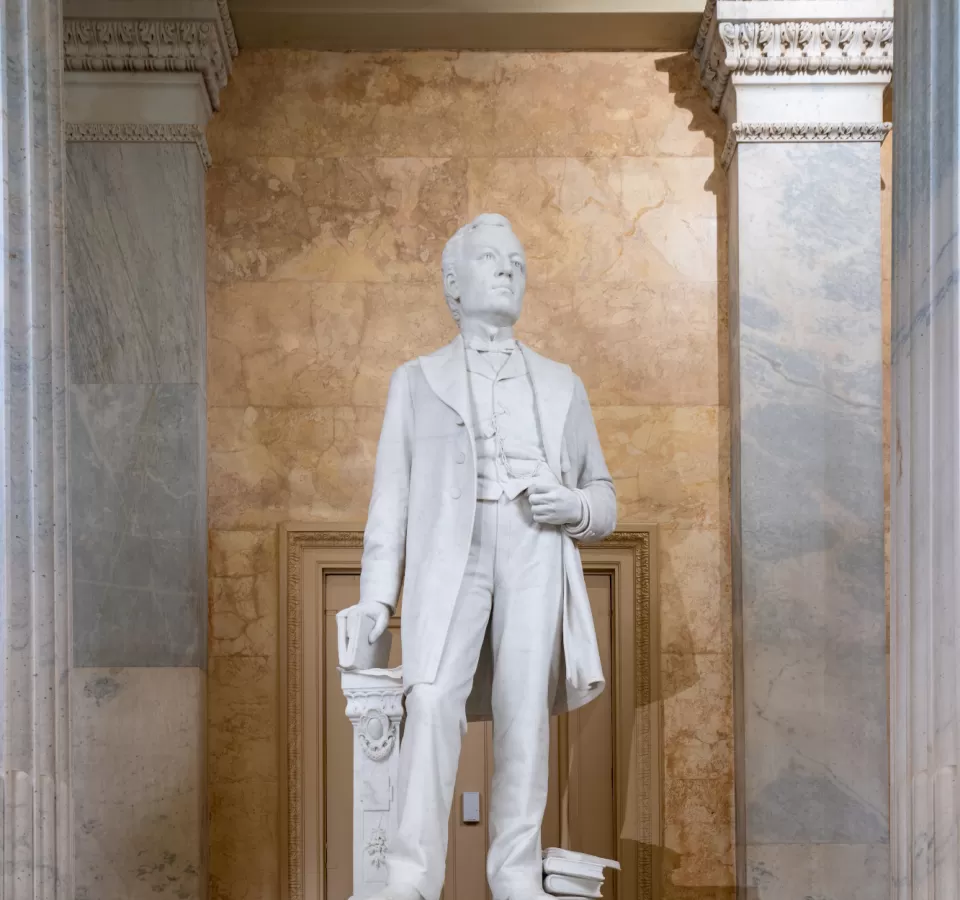This statue of John E. Kenna was given to the National Statuary Hall Collection by West Virginia in 1901.
John Kenna was born on April 10, 1848, in Kanawha County, Virginia, which became part of the state of West Virginia in 1863. He had little education, and at the age of 16 he served with General Shelby in the Confederate Army and was wounded. After returning home, he read law and was admitted to the bar in 1870. He became very active in the emerging Democratic party of West Virginia.
He rose from prosecuting attorney of Kanawha County in 1872 to justice pro tempore of the county circuit in 1875, and to the United States House of Representatives in 1876. While in the House he championed railroad legislation and crusaded for aid for slack-water navigation to help the coal, timber and salt industries in his state. These activities earned him a seat in the United States Senate in 1883, where he continued fighting for his two causes.
Kenna became Democratic minority leader and emerged as a powerful and controversial speaker on the issue of the independence of the executive branch of the government. He forcefully defended President Cleveland on several issues and indicted the Senate Republican majority for failure to pass tariff reforms. His brilliant career was cut short with his sudden death at the age of 45 on January 11, 1893.
Artist
Alexander Doyle was born in Steubenville, Ohio, on January 28, 1857. His father worked in the stone business, and the family spent several years in Italy when Doyle was young. He returned to Italy as a young man, supervising the family's business interests and studying sculpture, music and painting in Carrara, Rome and Florence. When he returned to the U.S. in the late 1870s, he quickly found clients.
A prolific sculptor, he maintained studios in New York and Squirrel Island, Maine, and he worked in both bronze and marble. Many of his commissions were for military figures; he sculpted both Confederate and Union figures. In an 1884 newspaper interview, Doyle discussed his approach to portrait sculpture and stated that contemporary artists were moving away from traditional motifs like "classical garb." He argued that "[w]e prefer our heroes and statesmen clothed in the habits of our times, and often select some great incident in their career, and portray them in such a manner as to commemorate that event. The more advanced and most successful artists are those who impress the beholder with strong realism at first sight, that gives the full impression of the dignity and character of the hero."1
In 1898, shortly after Doyle completed statues of Francis Preston Blair Jr. and John Kenna for the National Statuary Hall Collection, his father died. Doyle stopped sculpting to manage his estate and limestone quarry. In 1906, Doyle returned to sculpture when he volunteered to create, for free, a massive bronze statue of Edwin McMasters Stanton, also a native of Steubenville. He retired after the statue was dedicated in 1911 and worked on a model for a statue of Lincoln until just before his death on December 21, 1922 in Deadham, Massachusetts. Other subjects of his sculptures include Generals Albert Sydney Johnston, Robert E. Lee and Philip Schuyler, President and Representative James A. Garfield, and newspaper publisher Horace Greeley.

